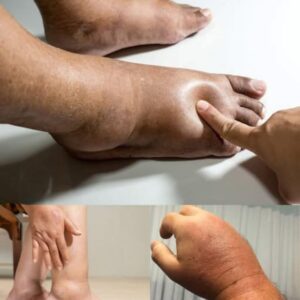Unexplained Leg Cramps at Night: What Might Be Behind Them and How to Address the Issue
Many individuals experience nighttime leg cramps unexpectedly, waking up abruptly due to painful muscle contractions that can disrupt sleep and diminish overall well-being. While occasional leg cramps can be common and benign, persistent or severe episodes warrant closer attention, as they may be indicative of underlying health conditions or lifestyle factors that require management.
Understanding Nighttime Leg Cramps
Nighttime leg cramps—also known as nocturnal leg cramps—are involuntary contractions of the calf muscles, thighs, or feet that occur during periods of rest or sleep. These cramps can last from a few seconds to several minutes, often accompanied by a painfully tight feeling and difficulty moving the affected limb temporarily. Many sufferers describe the sensation as a charley horse, a classic and familiar experience for many.
Prevalence and Demographics
While nighttime leg cramps can occur in individuals of all ages, they tend to be more common among older adults, pregnant women, athletes, and those with certain medical conditions. The prevalence increases with age, with surveys indicating that up to 50% of older adults experience these cramps periodically.
Possible Causes and Contributing Factors
The causes of nighttime leg cramps are multifaceted, often involving a combination of physiological and lifestyle factors:
1. **Electrolyte Imbalances:** Deficiencies in minerals such as potassium, magnesium, calcium, and sodium can disrupt muscle function, leading to cramps. This can stem from inadequate dietary intake, excessive sweating, or certain medications.
2. **Dehydration:** Insufficient fluid intake can deplete electrolytes and impair muscle function, increasing the likelihood of cramps.
3. **Poor Circulation:** Circulatory issues can decrease blood flow to the muscles, resulting in cramping.
4. **Prolonged Inactivity:** Extended periods of inactivity or staying in one position for too long, such as during long flights or sitting at a desk, may trigger cramps.
5. **Muscle Overexertion or Fatigue:** Overusing leg muscles during physical activity can cause soreness and cramping during rest.
6. **Medical Conditions:** Certain health problems, including peripheral artery disease, diabetes, thyroid disorders, neurological conditions, and kidney or liver diseases, are associated with an increased risk of nocturnal cramps.
7. **Medications:** Diuretics, statins, beta-blockers, and other medications can influence electrolyte balance or muscle function, leading to cramps.
8. **Pregnancy:** Hormonal changes and increased blood volume during pregnancy can contribute to leg cramps in expectant mothers.
Diagnosing Underlying Causes
Persistent or severe nighttime leg cramps should prompt a consultation with a healthcare professional. A comprehensive evaluation might involve reviewing medical history, medications, and lifestyle factors, along with laboratory tests to assess electrolyte levels, kidney function, and other relevant parameters. Identifying any underlying health conditions is essential to developing an effective treatment plan.
Strategies for Prevention and Relief
While occasional cramps are usually harmless and manageable, adopting certain habits can help reduce their frequency and intensity:
– **Stay Hydrated:** Ensure adequate fluid intake throughout the day, especially in hot weather or during physical activity.
– **Maintain Balanced Nutrition:** Incorporate foods rich in potassium (such as bananas, oranges), magnesium (nuts, seeds, leafy greens), and calcium (dairy products, fortified foods).
– **Stretch Regularly:** Gentle stretching of calf muscles and thighs before bed can help loosen muscles and prevent cramps.
– **Exercise Moderately:** Engage in regular, moderate exercise, but avoid overexertion and allow muscles to rest and recover.
– **Avoid Prolonged Inactivity:** Stand up, move around, or perform light stretches if sitting or lying still for extended periods.
– **Good Sleep Hygiene:** Establish a consistent sleep schedule and create a relaxing bedtime routine to promote restful sleep.
– **Address Medical Conditions:** Proper management of any underlying health issues can significantly reduce the incidence of cramps.
– **Review Medications:** Consult healthcare providers about possible side effects of medications and alternatives if cramps are problematic.
When to Seek Medical Attention
Persistent, intense, or worsening cramps should be evaluated by a healthcare professional. Additionally, if cramps are accompanied by swelling, redness, warmth, or signs of circulation issues, or if they interfere significantly with sleep and daily activities, further investigation is warranted.
Insights from Recent Research
Emerging studies continue to explore the complex mechanisms behind nocturnal leg cramps. Some research suggests that disturbances in nerve function or abnormalities in muscle ion channels may contribute to cramp susceptibility. New approaches, including dietary supplementation of magnesium or specific stretching protocols, have shown promise in reducing episodes, but more robust clinical trials are needed to firmly establish their efficacy.
In Summary
Nighttime leg cramps are a common yet often manageable condition that can interfere with sleep and quality of life. Recognizing potential causes and adopting preventive strategies can lead to significant relief. Addressing nutritional deficiencies, maintaining good hydration, engaging in regular gentle stretching, and managing underlying health concerns are key steps to minimizing occurrences. If cramps persist or worsen, consulting a healthcare provider is essential to rule out underlying medical issues and explore targeted treatments.
Check 1st comment for additional insights and personalized tips on managing and preventing nighttime leg cramps.
STAY TUNED !





